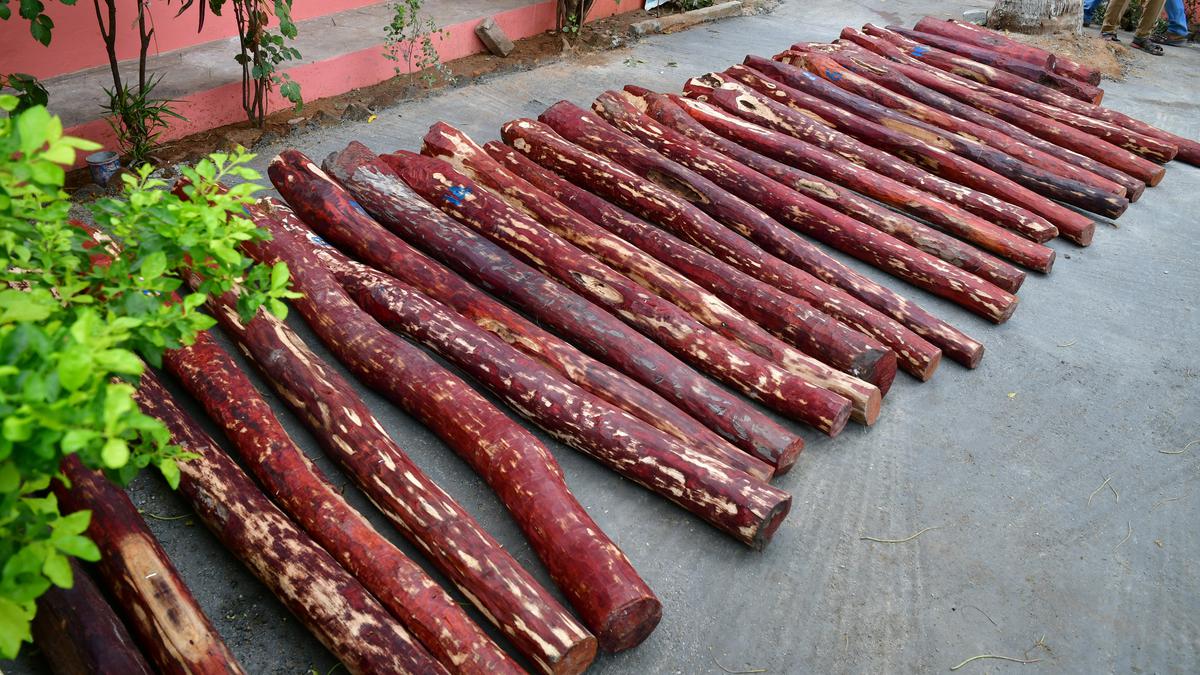News Highlight
The United Nations Environment Programme (UNEP)-managed CITES database reveals red sanders smuggling.
Key Takeaway
- The CITES trade database records 28 cases of Red Sanders confiscation, seizure, and wild specimen exportation from India.
- It is a factsheet prepared by TRAFFIC, a global wildlife trade monitoring organisation.
Red Sanders
- About
- Pterocarpus santalinus is an Indian indigenous tree with a limited geographical range in the Eastern Ghats.
- The species is restricted to a small forest area in Andhra Pradesh.
- Red Sanders is typically found on rocky, damaged, and fallow lands with Red Soil and a hot, dry climate.
- Protection Status
- Protection Status IUCN Red List: Endangered.
- CITES: Appendix II
- Wildlife (Protection) Act 1972: Schedule II
Uses of Red Sanders
- It is used to treat blood purification.
- Red senders can also be used to treat stomach issues and coughs.
- Although red senders are claimed to absorb radioactive radiation, their primary purpose is to be attractive and ornamental.
- It is also used in the colouring of meals.
- This is also used to treat cancer, fluid retention, wounds, and other ailments.
- Red sands have been in high demand in China recently and since ancient times.
- Because of its rich red colour and other characteristics, the wood of the red sanders differs significantly from the wood.
- People utilise this wood for agriculture equipment since the wood required for agriculture is hardwood, and other softwoods will break readily.
- These are the most important uses of red sanders, for which this species is in high demand worldwide.
- Furthermore, people are willing to pay a high price for this wood.
Threats on Red Sanders
- According to the IUCN, the species has declined by 50% to 80% in popularity during the last three generations.
- Red sanders are also threatened by overharvesting and exploitation.
- New species are not overgrowing, and harvesting is ongoing.
- Red sander smuggling is illegal.
- Illegal smuggling has escalated since the prohibition on red sanders.
- People continue smuggling the timber through highways, sea roots, and other methods.
- The majority of smuggling incidents have occurred in India’s south.
- Another threat to the red sender tree is a forest fire.
- Fire, trees, and birds all struggle in the forest.
- Slow growth and continual harvesting appear to be major threats to red sanders.
Government initiatives to Curb the Illicit Trade of Red Sanders
- It was the best moment when the species was first removed from the endangered list in 1997.
- Species have seen a significant drop in increase over the last year.
- Recently, The Union Minister of State for Home Affairs urged the state government of Andhra Pradesh to safeguard the red sanders tree.
- They are natives of the Seshachalam ecosystem.
- It reduces smuggling operations in the region.
- After mapping the red sanders area with a multitemporal satellite, a conservation plan should be developed for future sustainable exploitation.

Pic Courtesy: The Hindu
Content Source: The Hindu



